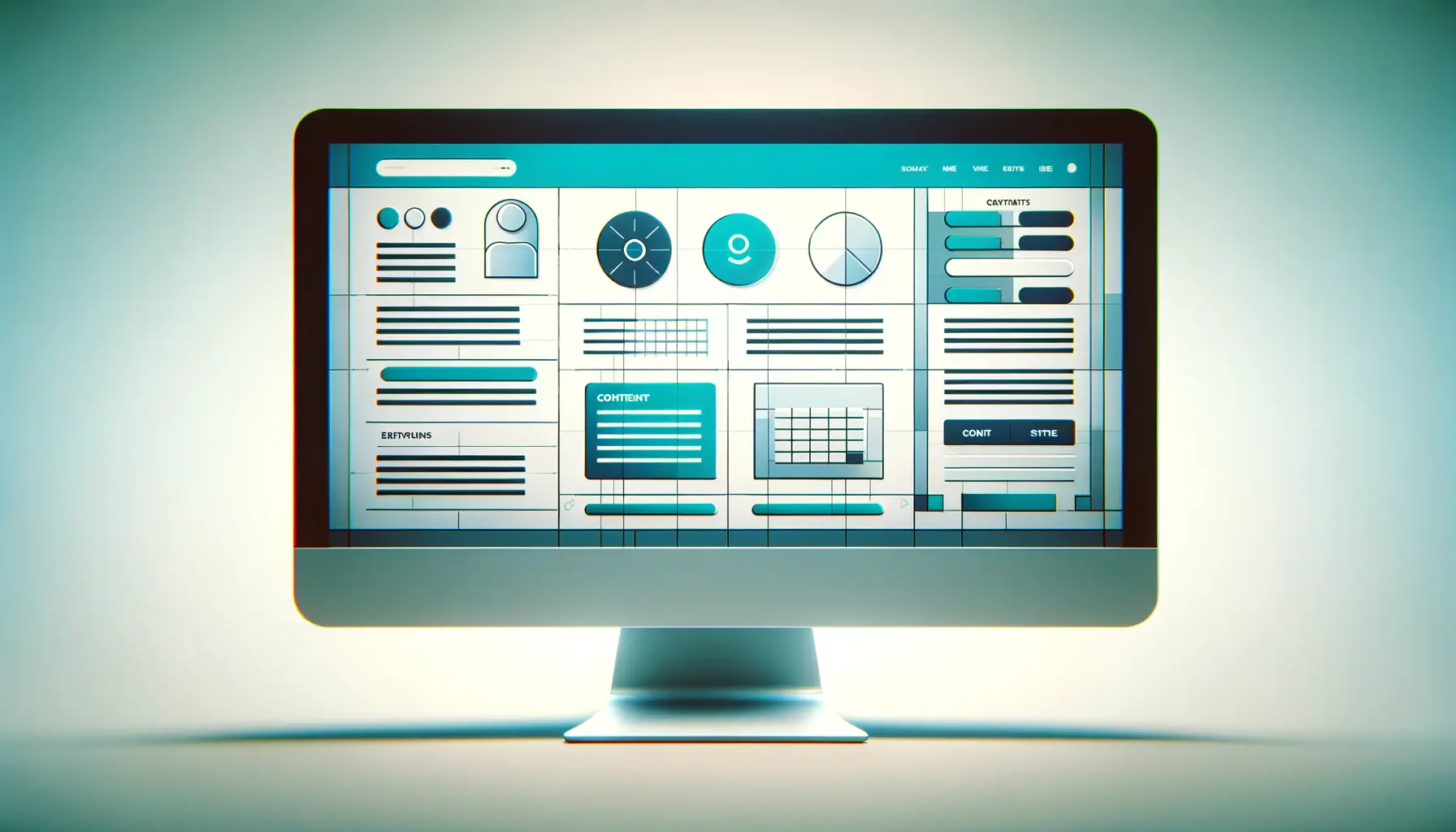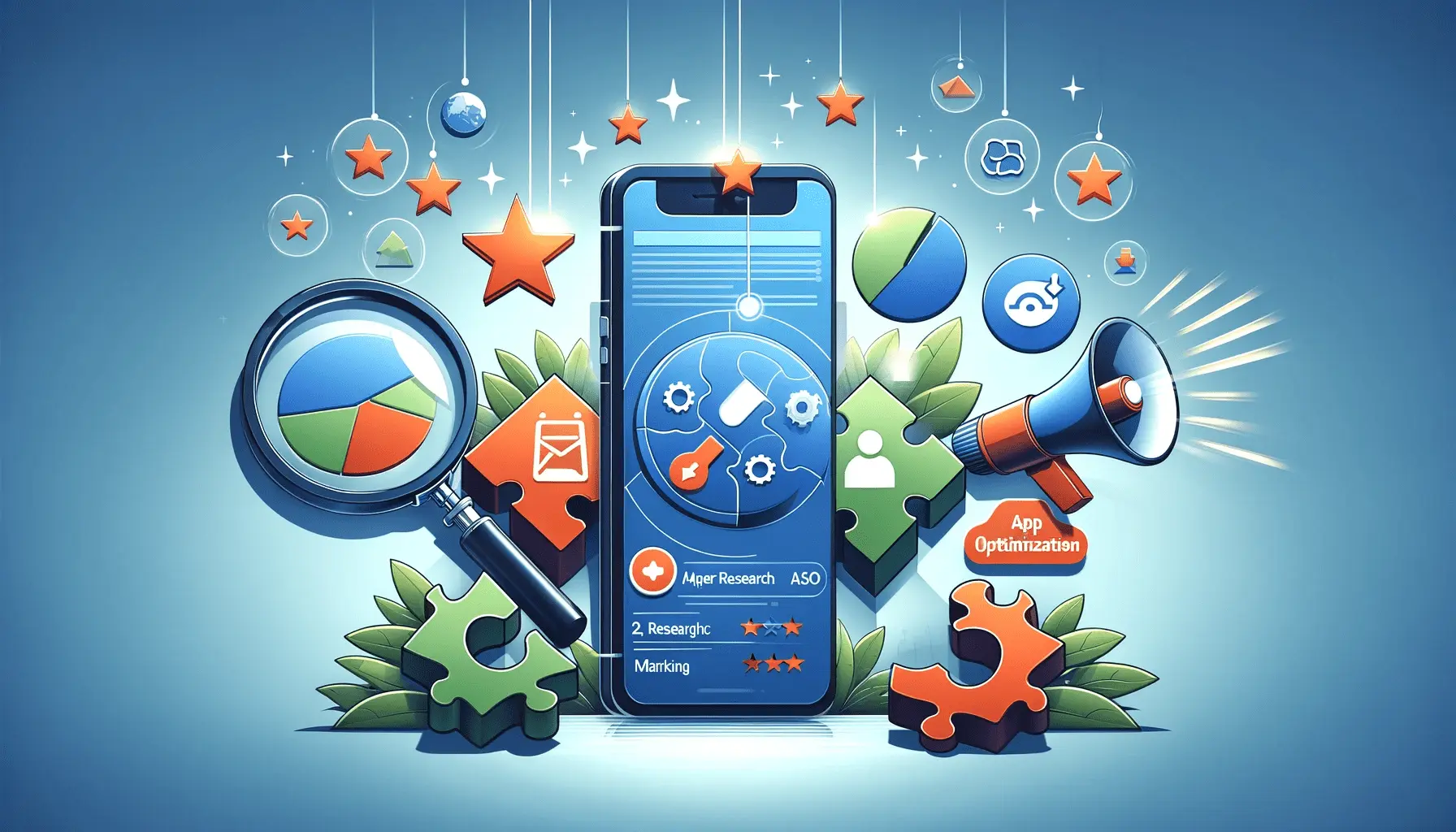Have you ever visited a site and felt like it just wasn’t built with you in mind?
Maybe the print was hard to read, the structure confusing, or you weren’t able to use it without the help of a mouse.
These are signs of a website that is not built with inclusive design.
Your website in our modern age is not only a storefront — it’s a destination that should welcome everyone.
Inclusive design ensures that no one feels left out, regardless of their physical abilities, age, language, or background.
And if you’re serious about building a successful digital presence, inclusive design isn’t just nice to have — it’s essential.
In this article, we’ll explore how inclusive design plays a key role in web development.
We’ll look at why it matters, how it works, and what it means for your brand.
So let’s begin at the beginning — what inclusive design is and why it’s the magic spice behind a super user-friendly site.
- What Is Inclusive Design in Web Development?
- Designing for Users of Varying Abilities
- Best Practices for Implementing Inclusive Design
- Tools and Resources to Support Inclusive Design
- The Business and Ethical Case for Inclusive Design
- Inclusive Design as the Platform for Digital Success
- Inclusive Design: FAQs
What Is Inclusive Design in Web Development?
Inclusive design in web development is all about making digital experiences accessible to as many individuals as possible regardless of ability, background, or situation.
It’s more than accessibility, though.
It’s not only about compliance; it’s also about empathy — empathizing with all the various types of needs your users have and designing for those needs from the beginning.
So, why is inclusive design so important to today’s web?
The web is global.
Your users are from everywhere.
When your site serves everyone, it opens up opportunities — not just for consumers, but for your company, too.
Defining inclusive design in digital spaces
Inclusive design is all about intentionally designing sites that can adapt to individuals with diverse needs.
That is, users with disabilities, older users, assistive technology users, or even a person trying to use your site with one hand on a crowded train.
It’s not about having one version of your website for disabled people and another for all the rest.
Instead, it’s about having one that works for all — right from the start.
Think of inclusive design as building flexibility into your virtual space so that all of your content is convenient and comfortable to use for everyone.
Inclusive design vs. accessibility
Though the two concepts go together, they are not quite synonymous.
Accessibility generally involves meeting some sort of standards — like WCAGWeb Content Accessibility Guidelines — a set of standards for making web content more accessible. — so that disabled individuals can use your site.
Inclusive design is a broader strategy.
It’s forward-thinking, human-centered, and focuses on the whole range of user diversity.
Inclusive design considers:
- Temporary impairments (e.g., a broken arm)
- Situational limitations (e.g., using a phone in sunlight)
- Socio-economic variations (e.g., limited access to fast internet)
By going beyond compliance, inclusive design allows you to engage with more people — and helps them feel like they’re included too.
The impact of inclusive web design on user experience
User experience (UX) lies at the heart of inclusive design.
When your site is created with inclusive design, users don’t struggle.
They don’t have to guess.
They feel seen, heard, and understood.
Here’s why inclusive design enhances UX:
- Easy navigation allows users to find what they’re looking for faster
- Readable text and flexible layouts make content more engaging
- Less frustration leads to longer visit times and lower bounce rates
And the benefits aren’t just for the user.
You’ll likely see better results too — whether it’s increased conversions, improved SEO, or stronger brand loyalty.
Key principles guiding inclusive website design
There are a few core principles that make inclusive design work:
- Flexibility: Your site should work across devices, platforms, and input methods.
- Clarity: Keep your content easy to understand and your layout intuitive.
- Consistency: Maintain uniform navigation and design patterns across all pages.
- Feedback: Let users know their actions are being acknowledged with responsive UI elements.
- User Involvement: Include diverse users in the design and testing phases to gain valuable insight.
Inclusive design is not a trend — it’s a mindset.
And the more you do it, the better your sites are for all.
As we move into the next section, we’ll look closer at how you can design especially for users with a wide variety of abilities.
Are you ready to make your site truly inclusive?
Inclusive design isn’t about creating alternatives — it’s about building one solution that works for everyone from the start.
Designing for Users of Varying Abilities
So that’s what inclusive design is.
Now it’s time to get practical.
What does it really look like to design a website for users with varying abilities?
The truth is, you can’t actually design an inclusive design experience until you learn about the wide variety of people who may use your site.
Inclusive design is all about moving beyond assumptions and designing with empathy.
It’s about putting yourself in the shoes of every user — whether their physical, sensory, or cognitive ability — and making your site accessible to all of them.
Helping users with visual impairments
Visual impairments span a wide range — from low vision to full blindness.
For such users, your site must be screen-reader accessible and high contrast visually.
Use alt text on images, ensure high color contrast between text and background, and allow text to be resized without breaking the layout.
- Use semantic HTML so screen readers will get the structure right
- Give text alternatives to all non-text elements
- Don’t use color alone to convey information
Even small changes in visual layout can make a big difference when you’re working with inclusive design principles.
Helping users with mobility or motor disabilities
Not everybody navigates the web with a mouse or touchscreen.
Certain users rely on adaptive devices, voice commands, or keyboard navigation.
That’s why you must ensure all interaction on your site is achievable with a keyboard.
- Empower full keyboard navigation of all interactive elements
- Ensure large, well-spaced click areas
- Minimize time-sensitive actions or add time extension
When you give mobility inclusion top priority, you’re reinforcing your inclusive design efforts and opening up your site to everyone.
Inclusive design for neurodivergent users
Neurodivergent users — such as those with autism, ADHD, or dyslexia — can be overwhelmed by busy interfaces, flashing animations, or complicated layouts.
An inclusive design approach here is one of minimizing cognitive load and presenting smooth, consistent interactions.
- Keep interfaces clean, organized, and distraction-free
- Speak clearly and use plain language
- Provide the ability to pause or disable animations
Remember, simplicity benefits all.
What helps neurodivergent users will improve usability for everyone.
Designing for cognitive and learning differences
Some people with learning disabilities or cognitive issues may need a little more time to process information or may welcome the use of visual aids and simpler navigation.
Inclusive design here means thoughtful attention to how content is organized and displayed.
- Divide content into small, scannable pieces
- Employ headings and bullet points to organize ideas
- Provide supportive graphics or icons to add meaning
Your goal is to create a relaxed and intuitive website experience.
When your site is open to a person who thinks differently, it’s available to all persons — and that’s inclusive design’s strength.
Inclusive design does not involve tossing in some more bells and whistles; rather, it is about retooling how you design.
As soon as you begin designing with inclusivity in mind, you end up building wiser, superior, more human online environments.
In the next section, we’ll dive into the best practices for actually implementing these ideas.
Ready to build better?
Designing inclusively means considering not just permanent disabilities but temporary and situational ones as well.
Best Practices for Implementing Inclusive Design
Knowing what inclusive design is and who it serves is one thing — but turning that knowledge into action is where the real change happens.
You might be asking, “How do I actually build an inclusive website?” This is where best practices come in.
By following proven techniques and consistently putting users first, you can create web experiences that are both functional and welcoming to everyone.
Let’s explore some of the most effective strategies that make inclusive design a part of your development process from the ground up.
Using semantic HTML and ARIA roles effectively
One of the foundations of inclusive design is writing clean, semantic HTML.
This helps assistive technologies like screen readers accurately understand the content and structure of your site.
- Use correct HTML tags (e.g., <nav>, <header>, <main>, <footer>) to define page structure
- Apply ARIA (Accessible Rich Internet Applications) roles only when necessary
- Label form elements properly to help users with screen readers
Semantic code improves the overall accessibility and clarity of your website, which is a core aspect of inclusive design.
Designing intuitive and consistent navigation
Clear and predictable navigation is essential for all users, especially those with cognitive or motor impairments.
Inclusive design means users should never feel lost or unsure of how to move through your site.
- Keep navigation menus simple and logically ordered
- Use consistent labels and placements for navigation elements
- Include a visible focus indicator for users navigating with a keyboard
When users can easily find what they’re looking for, they’re more likely to stay and engage with your content.
Providing alternatives for multimedia content
Not everyone can see videos or hear audio content.
Inclusive design requires that you offer alternative ways for users to access the same information.
- Add accurate captions to all videos
- Provide transcripts for audio content
- Use descriptive audio for important visuals in videos
By making multimedia inclusive, you’re giving everyone an equal opportunity to engage with your message.
Ensuring responsive and mobile-friendly design
More users than ever access websites via mobile devices, and for many with disabilities, mobile may be their primary or only option.
A critical component of inclusive design is making sure your site works across all screen sizes and devices.
- Use flexible layouts and media queries to support various screen sizes
- Ensure buttons and links are easy to tap with fingers or assistive tools
- Test your site on multiple devices and browsers regularly
When your website performs well on mobile, it becomes more accessible to a wider range of users.
Testing with real users from diverse backgrounds
One of the most effective inclusive design practices is involving real users in the process — especially those with disabilities or unique needs.
Automated tools are helpful, but nothing replaces direct feedback.
- Conduct usability testing with participants from different ability groups
- Observe how users interact with your site and identify pain points
- Use their input to drive improvements and prioritize accessibility features
Inclusive design websites are built through collaboration.
Including a diverse set of voices ensures your site truly works for everyone.
By following these best practices, you’re not just improving accessibility — you’re creating a site that reflects empathy, professionalism, and modern standards.
In the next section, we’ll explore the tools and resources that can support you on your journey toward mastering inclusive design.
Ready to level up?
Using semantic HTML and testing with real users are some of the most effective ways to ensure inclusive design in practice.
Tools and Resources to Support Inclusive Design
Inclusive design is not necessarily intimidating.
Thankfully, there are plenty of tools and resources to make inclusive design more straightforward, accurate, and efficient.
No matter if you’re a designer, developer, or content creator, the right tools can help you review your work, identify issues, and improve user experiences for everyone.
The following are some of the best tools and resources that can help you integrate inclusive design into every phase of your website development lifecycle.
Best web accessibility testing tools
Accessibility testing is a critical part of inclusive design.
These tools help you check for issues that can prevent people with disabilities from using your site effectively.
- WAVE: A browser add-on that highlights accessibility errors and recommends how to fix them.
- axe DevTools: A powerful browser tool for finding and fixing accessibility issues when coding.
- Lighthouse: A native Chrome tool that provides an accessibility score and recommendations.
These tools help you identify gaps in your inclusive design and offer you actionable suggestions to repair them.
Design systems that prioritize inclusivity
Using design systems that are built with inclusive design as a consideration will save you time and help with consistency.
These systems typically have accessible components, color palettes, and layout patterns compliant with accessibility guidelines.
- Material Design: By Google, whose UI components and design principles are openly accessible.
- Carbon Design System: IBM’s open-source design system whose core has accessibility.
- Lightning Design System: By Salesforce, whose inclusive UX patterns it accommodates.
A choice of an inclusive design system guarantees accessibility from the start of your project.
Color contrast and typography checkers
Color and typography are of prime importance to readability — a large part of inclusive design.
These tools guarantee your design choices are inclusive for users with visual disabilities or reading disabilities.
- Contrast Checker by WebAIM: Quickly tests if your text is WCAG contrast compliant.
- Accessible Colors: Offers color pairing recommendations that are accessibility guideline compliant.
- Typetester: Helps compare and adjust typography settings for better readability.
These tools guarantee your content is not only beautiful but also inclusive.
W3C and WCAG standards guidelines
If you are concerned about inclusive design, you need to know and apply global accessibility guidelines.
The World Wide Web Consortium (W3C) gives in-depth guidelines on building websites to global standards.
- WCAG (Web Content Accessibility Guidelines): Globally adopted guidelines for accessible web development.
- WAI-ARIA: Specifications for enhancing dynamic web page accessibility for users with disabilities.
- W3C WAI: Center for accessibility methodologies and techniques.
These guidelines are the cornerstone of any inclusive design project.
Training material for inclusive design teams
Learning is a very important part of becoming competent at inclusive design.
Whether you’re just starting out or must develop your team’s expertise, there are fantastic learning resources and courses available.
- Deque University: Offers accessibility training for developers, designers, and testers at an in-depth level.
- Google Accessibility Courses: Hands-on inclusive design skills online courses available for free.
- Microsoft Inclusive Design Toolkit: Complete guide and set of activities to include inclusion in your process.
Education invests in ensuring inclusive design is part of your team culture — not a checkmark box.
Inclusive design is easier, scalable, and significantly more effective when using the correct tools and education.
Up next, we’ll explore why embracing inclusivity isn’t just good design — it’s good business, too.
With the right tools — from contrast checkers to design systems — making your website inclusive becomes both achievable and scalable.
The Business and Ethical Case for Inclusive Design
Inclusive design isn’t just the right thing to do — it’s good business as well.
By creating digital experiences that work for everyone, you not only meet your ethical responsibilities, but you also unlock market potential and build a stronger brand.
In fact, the globe is witnessing increasingly more companies realize that accessibility and inclusion are not mutually exclusive from business goals — they actually improve them.
Let’s consider the most significant motives why inclusive design investment is an ethical imperative as well as a profitable move.
Expanding audience potential through inclusive behaviors
Over 1 billion people globally live with a disability.
When you’re neglecting inclusive design, you’re potentially excluding a portion of your audience.
But by making experiences accessible, you open your website to more people — aging populations, low-bandwidth regions, and assistive technology users.
- Inclusive design broadens your customer base
- Increases access for users in different settings and situations
- Wins loyalty from users who feel they’re valued and respected
Inclusivity opens up opportunities both socially and financially by breaking down digital barriers.
Making SEO and site performance improved through accessibility
Much of what contributes to inclusive design are good practices for SEO as well.
Clean code, clear navigation, descriptive alt text, and quick load times aren’t only wonderful for accessibility, but also make your site better crawled by search engines.
- Semantic HTML makes it easier for search engines to get your content
- Accessible video and images make your site more visible on the search results page
- Better UX results in fewer bounce rates and longer visit times
When your site is built with inclusive design, it automatically performs better — technically and experientially.
Legal ramifications of neglecting inclusive design principles
Neglecting inclusive design can result in legal repercussions.
It is legally required in the majority of nations, including the U.S., U.K., and Canada, for publicly accessible websites.
Failing to meet these standards can result in lawsuits, penalties, and damage to your reputation.
- The Americans with Disabilities Act (ADA) requires digital accessibility in the United States
- WCAG compliance is the global standard
- Legal web accessibility cases have remained on the rise over the last few years
Being proactive regarding inclusive design safeguards you against risk while showing your commitment to equal access.
Designing a brand image based on inclusion
Today’s consumers expect brands to stand for something.
Inclusive design in practice shows that your company cares about diversity, equity, and inclusion — not just in words, but in action.
This builds trust and enhances your reputation.
- Inclusive brands are viewed as more forward-thinking and socially conscious
- Good brand perception can lead to greater customer loyalty
- Internal teams also benefit from working for inclusive-thinking companies
When inclusivity is part of your brand identity, you’re unique — not just in your field, but in the minds of your customers.
Inclusive design isn’t an expense — it’s an investment in the future of your business and the people it touches.
As we reach the end of this journey, one thing is certain: designing for all isn’t a trend — it’s a necessity for digital success today.
Inclusive design doesn’t just feel good — it drives real business value through SEO, legal protection, and brand loyalty.
Inclusive Design as the Platform for Digital Success
We have considered, throughout this article, how critical inclusive design is in driving digital experiences that are beneficial for everyone — and not just an exclusive few.
From defining its core principles to finding its business value, it’s clear that inclusive design is more than a design philosophy; it’s a redesign strategy for a better, more inclusive web.
Why Inclusive Design Is More Important Than Ever
We inhabit a planet where diversity is the norm — not the exception.
Your users come with diverse needs, backgrounds, and abilities.
Inclusive design recognizes this reality and responds with empathy, imagination, and foresight.
It leaves nobody in the dark when it comes to how they access or use your site.
With over a billion individuals with disabilities worldwide, designing for inclusion is no longer optional — it’s obligatory.
And when you embrace inclusive design, you’re not only making accessibility a reality — you’re creating superior products for everyone.
Key Takeaways for Designing Inclusive Websites
To put inclusive design into practice, make the following pillars your priority:
- Design with empathy — consider the wide range of user needs right from the start.
- Use semantic HTML and follow accessibility standards like WCAG and WAI-ARIA.
- Make content readable, interactive, and accessible on any device and input type.
- Test your site with real users with different backgrounds and abilities.
- Use tools, design systems, and learning resources to keep your knowledge current and consistent.
The Value of Inclusive Design to Your Brand
Embracing inclusive design makes your company stronger from the inside out.
It opens your market, improves SEO, and assists with legal compliance.
But most importantly, it shows your users you pay attention to them, appreciate them, and care enough to go where they go.
The best brands today are the ones that center on humans — and inclusive design is the ultimate translation of that people-centric commitment in the digital space.
When you design inclusively, you’re not just improving UX — you’re building loyalty, trust, and lasting impact.
Looking Ahead: A Call to Action
If there is one takeaway from this tour of inclusive design, it’s this: inclusion cannot be an afterthought.
When you’re launching a new site or revamping an old one, start with inclusivity top of mind.
Join forces with diverse voices, challenge assumptions, and better yourself ever forward.
The web is evolving at breakneck speeds — and so should your design approach.
With the right attitudes, technologies, and dedication, you can welcome everyone who visits your site through truly accessible experiences.
Because when all is said and done, inclusive design is just good design — it’s the future of digital.
Inclusive design reflects your commitment to all users and sets the stage for long-term digital success in a diverse world.
Quality web design is key for a great website! Check out our service page to partner with an expert web design agency.
Inclusive Design: FAQs
The following are some of the most commonly asked questions about inclusive design, its application, and its importance in web development today.
Inclusive design for web development involves developing websites that work for everybody, including people with disabilities, by meeting diverse needs and removing barriers to access, interaction, and content consumption.
Accessibility is focused on technical standards and compliance, while inclusive design is broader and proactive, considering different user abilities, contexts, and backgrounds from the beginning of the design process.
Inclusive design broadens your audience, boosts user experience, enhances brand reputation, and supports legal compliance while showing real care for social responsibility and fair access to digital content.
Examples of inclusive design techniques include keyboard navigation, alt text in images, readable typefaces, high-contrast colors, adaptive layouts, and responsive designs that work across devices and input methods.
Yes, inclusive design improves SEO.
Practices like semantic HTML, fast-loading pages, structured content, and accessible multimedia align with SEO best practices and boost visibility in search engines.
Start by understanding your users, following accessibility standards, testing with diverse individuals, using semantic HTML, and applying inclusive design tools and systems that support universal and responsive usability.
Although laws vary, most countries — including the U.S., U.K., and Canada — have legal standards for web accessibility.
Ignoring inclusive design may result in lawsuits, fines, and reputational damage.
Definitely.
Inclusive design improves usability for all users — not just those with disabilities — by creating simpler, clearer, and more flexible digital experiences that adapt to various needs and contexts.
Tools like WAVE, axe DevToolsA browser extension used by developers to identify and fix accessibility issues., LighthouseAn open-source, automated tool for improving the quality of web pages, including accessibility., and design systems such as Material and Carbon help identify accessibility issues and assist developers in applying inclusive design effectively.












